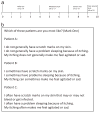Pruritus in Kidney Disease
- PMID: 26355256
- PMCID: PMC5497472
- DOI: 10.1016/j.semnephrol.2015.06.009
Pruritus in Kidney Disease
Abstract
Pruritus is a common and distressing symptom in patients with chronic kidney disease. The most recent epidemiologic data have suggested that approximately 40% of patients with end-stage renal disease experience moderate to severe pruritus and that uremic pruritus (UP) has a major clinical impact, being associated strongly with poor quality of life, impaired sleep, depression, and increased mortality. The pathogenesis of UP remains largely unclear, although several theories on etiologic or contributing factors have been proposed including increased systemic inflammation; abnormal serum parathyroid hormone, calcium, and phosphorus levels; an imbalance in opiate receptors; and a neuropathic process. UP can present somewhat variably, although it tends to affect large, discontinuous, but symmetric, areas of skin and to be most symptomatic at night. A variety of alternative systemic or dermatologic conditions should be considered, especially in patients with asymmetric pruritus or other atypical features. Treatment initially should focus on aggressive skin hydration, patient education on minimizing scratching, and optimization of the aspects of chronic kidney disease care that are most relevant to pruritus, including dialysis adequacy and serum parathyroid hormone, calcium, and phosphorus management. Data for therapy specifically for UP remain limited, although topical therapies, gabapentin, type B ultraviolet light phototherapy, acupuncture, and opioid-receptor modulators all may play a role.
Keywords: Uremic pruritus; chronic kidney disease; end-stage renal disease..
Copyright © 2015 Elsevier Inc. All rights reserved.
Conflict of interest statement
Conflict of interest statement: Michael Germain serves as a consultant for the following companies: Mitsubishi Tanabe Pharma Corporation, Cara Therapeutics, and Trevi Therapeutics, Inc.
Figures
References
-
- Weisbord SD, Fried LF, Mor MK, et al. Renal provider recognition of symptoms in patients on maintenance hemodialysis. Clin J Am Soc Nephrol. 2007;2:960–7. - PubMed
-
- Weisshaar E, Matterne U, Mettang T. How do nephrologists in haemodialysis units consider the symptom of itch? Results of a survey in Germany. Nephrol Dial Transplant. 2009;24:1328–30. - PubMed
Publication types
MeSH terms
Grants and funding
LinkOut - more resources
Full Text Sources
Other Literature Sources
Medical
Molecular Biology Databases



